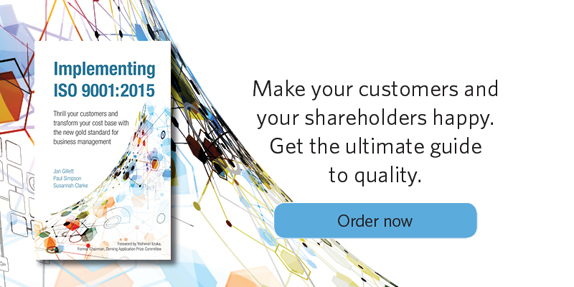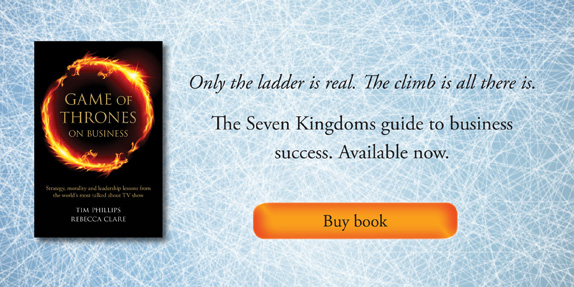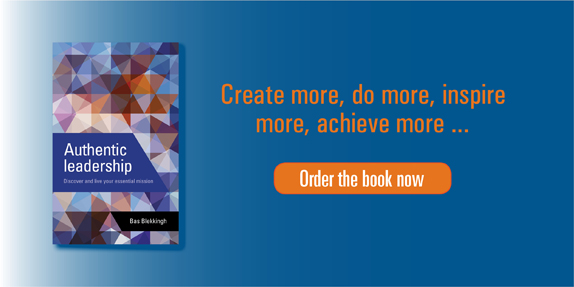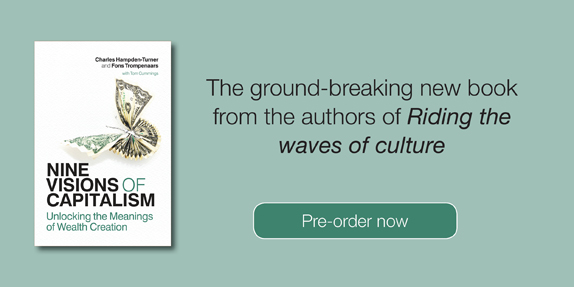Business and finance
Context is king when implementing the new ISO 9001 standard
26 November 2015 by Catherine Holdsworth in Business and finance, Implementing ISO 9001:2015
Paul Simpson, co-author of Implementing ISO 9001:2015, argues that while all organisations understand the markets they operate in, it’s through using the example of a corner shop that we can gain insights into how to apply this knowledge to satisfy the ISO 9001:2015 requirements.
The 5th edition of ISO 9001 contains significant requirements for organisations to assess and take actions on information in their working environment.
In a small number of words the standard creates huge responsibilities for the organisation’s leaders and the only effective way to demonstrate those requirements are met is to look at the organisation as a system and understand the processes that interact with others in the operating environment.
So, what does that mean in practice?
Thinking of my local corner shop to test out a concept
I live in a village where my local shop owner has a very good idea about who her customers are, and their buying patterns. She knows her regulars and those who pop in once a month for a pint of milk late on Sunday. Each time a customer purchases something it is scanned and goes through the till and she gets sales reports as often as she wants. Her staff make a note when someone asks for something not in stock and, periodically, she sits down and decides whether the current stock holding needs to change.
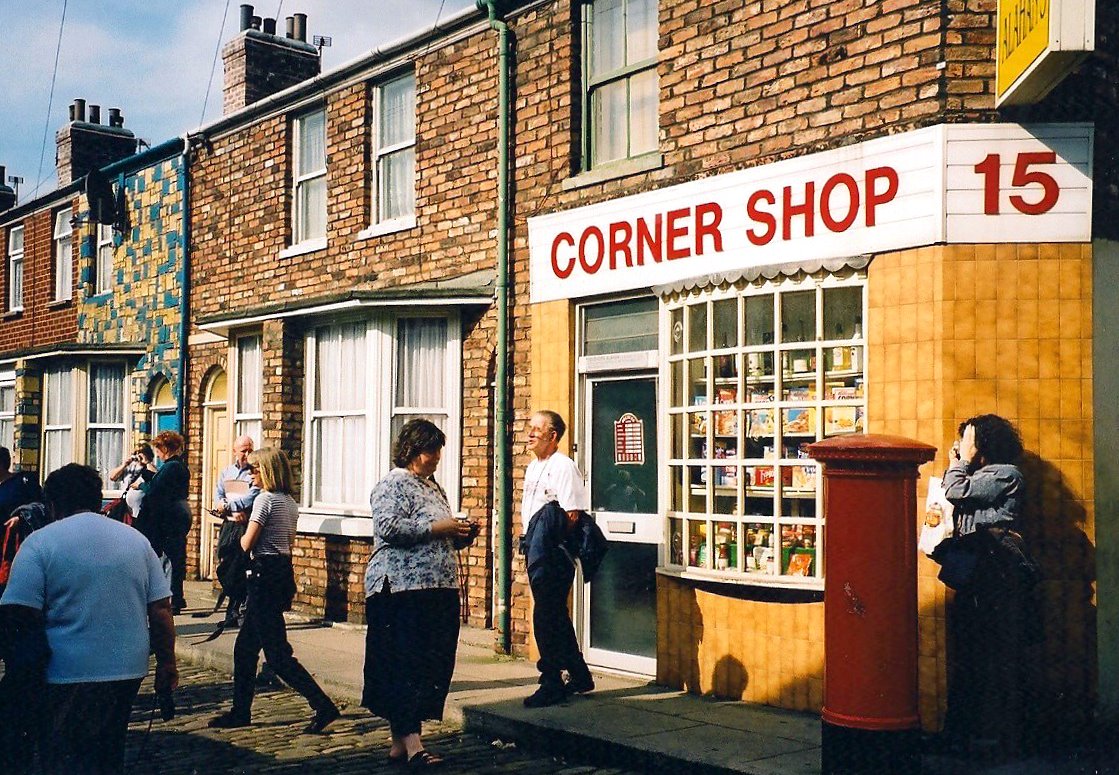
She has supplier reps and multiple mail shots from suppliers to give options and alternative products to stock. Her stock deliveries take place twice a week and an emergency delivery can be called up if needed. She knows her regular sales team, their strengths and weaknesses and sickness patterns and meets each of them daily and talks about what is happening currently and what she plans to do.
In the village the Parish Council is fairly active and occasionally she meets one of the councillors and they talk about village traffic, problems with parking and litter. All in all the relationship is amicable. In surrounding villages there are similar shops and recently one of the majors opened an express outlet.
In all of the above there are risks and opportunities that can affect the sustainability of her business so she has a plan that attempts to deal with the risks and maximise the opportunities. The plan is in her head and is occasionally discussed with her husband and some ideas are tested with selected customers. The plan adapts in the light of changes to the operating environment of the store.
In the spirit of ISO 9001:2015
So, in my example, we have a system (corner shop) operating in a range of wider systems (village, local area, grocery supply network). The shop is part of a range of processes that take food from farm to fork and news from event to the reader. Each process is operating in real time and competes for time from members of staff and space in the owner’s head in terms of developing plans and strategies.
I’ll put my neck on the line here and state that not only is my local shop owner doing a good job of running her business but her practices are in line with The Deming cycle and meet the spirit and letter of the requirements in ISO 9001:2015.
For larger organisations context assessment is a much more complicated process, part of strategic management but, if done well, requires no further effort to comply with ISO 9001:2015.
If, however, you haven’t done this piece of work effectively not only are you in serious danger of failing to meet your system objectives of being a sustainable, profitable business but you cannot hang your 2015 certificate on the wall in reception with a clear conscience.
Fons Trompenaars and the power of publishing
23 November 2015 by Richard Burton in 100+ Management Models, Book publishing, Business and finance, Current events, Nine visions of capitalism, Publishing for business
Last week celebrated cross-cultural management guru Fons Trompenaars rose in the influential Thinkers50 global ranking of business thinkers. Trompenaars climbed to 33rd place partly due to his recent book, written with Charles Hampden-Turner, Nine Visions of Capitalism but mainly, according to Stuart Crainer who created Thinkers50 with Des Dearlove in 2001, due to a significant increase in citations of his work during the last two years.
The Thinkers50 ranking, often described as the Oscars of management thinking, is a celebration of the very best new management thinking as well as those ideas which stand the test of time. Crainer says he is looking for “ideas with a potential impact that extends beyond the business world to address issues ranging from reducing poverty to building a sustainable model of capitalism.”
Trompenaars’ success shows the value to consultants of publishing paradigm-shifting content in an accessible, peer-reviewed context. Self-publishing seems not to have the credibility of commercially published works. Barry Gibbons, former Global CEO of Burger King and author of ten acclaimed business books says: “A published book (accent on ‘published’) can bring a string of powerful indirect benefits. It can boost a CV. It can take the place of a business card, with 1000 times the impact. It can open up lucrative speaking or consulting opportunities. It can enhance an author’s reputation in a defined target market.”
Trompenaars’ ideas on cross-cultural development have been published widely in reviews such as Harvard Business Review and Intercultural Management Quarterly but he has also had a major impact with books like 100+ Management Models: How To Understand And Apply The World’s Most Powerful Business Tools, Servant Leadership across cultures and The global M&A tango: How To Reconcile Cultural Differences In Mergers, Acquisitions And Strategic Partnerships. Most of Trompenaars’ books are jointly published by Infinite Ideas in the UK and McGraw-Hill in the US.
Trompenaars and his team have developed a unique resource in the cross-cultural and other databases they have developed over thirty years. He adopts a measurement and data-driven approach to benchmark, inform, advise and diagnose client problems and provide practical solutions. He maintains that organizations need stability and growth, long-term and short-term decisions, tradition and innovation, planning and laissez-faire. The challenge is to integrate these opposites, not to select one at the expense of the other. You have to inspire as well as listen, to make decisions yourself but also delegate and you need to centralize your organization around local responsibilities. Trompenaars’ work is unique in that his focus has been to use his research on culture to find reconciliation of differences rather than simply identifying them.
John Naisbitt, author of Megatrends, described Nine Visions of Capitalism as “an important and brilliant book. With deep insights on China, it helps us understand a world undergoing extraordinary change.” Trompenaars recently sold his business, Trompenaars Hampden-Turner, to KPMG for an undisclosed sum. It is impossible to calculate the effect of these deep insights in the books and articles on the sale price but it’s fair to say that Trompenaars’ global Thinkers50 ranking which itself depends so heavily on publishing gave it a significant push in the right direction.
What about the customer experience?
18 November 2015 by Catherine Holdsworth in Business and finance, Implementing ISO 9001:2015
Susannah Clarke, co-author of Implementing ISO 9001:2015, asks whether the principles of DFMA are enough if customer delight gets overlooked along the way.
I’m working on an interesting project in the construction sector at the moment, looking at how and what this sector can learn from the automotive and aerospace industry and the standards they now achieve, particularly related to Design for Manufacture and Assembly (DFMA).
One area of interest is offsite construction, where modules are designed and built offsite and then transported to the site. The theory is that this approach will drive standardisation, lower costs and reduce the time to build/construct. Of course achieving these goals depends much on the original design being robust and appropriate for offsite construction – it’s got to fit together seamlessly on arrival with the other components.
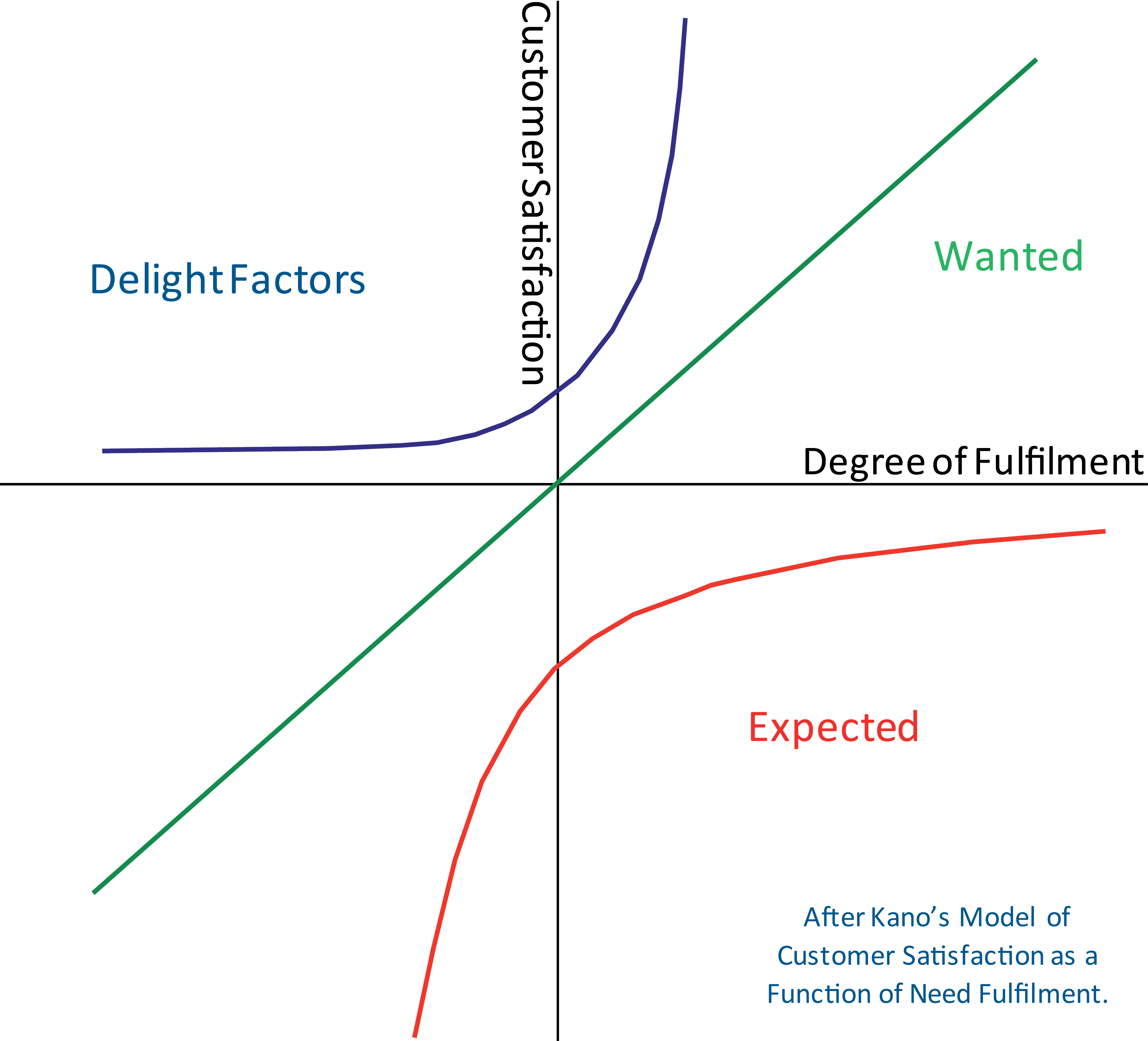
The importance of this was brought home to me a couple of weeks ago when I received a new desk for my home office. I had ordered it from a store for whom I feel a strong loyalty – many people do; it’s that kind of place. Therefore I had certain expectations: it would be high quality; it would look good; it would meet my needs with drawers, good access and easy sitting position, space to spread my work out on; it would arrive assembled. This is not a flat-pack store, so I was initially quite taken aback when the charming delivery men brought a very flat set of boxes into my house. I was not delighted!
However, undeterred, I set about with my toolbox, the instructions and a willing helper.
I’m going to spare you the photos of me, head in hands and manically waving my screwdriver about.
I’m not even going to talk you through the one afternoon and three evenings that it took me to get the desk completely assembled, although if you want a laugh and a good idea of the challenges I faced, watch the video below of Stephen Fry tackling flat pack furniture assembly (warning: there is some ‘choice’ language!).
I’m going to focus, instead, on what I learned, since it provides valuable insights for suppliers in terms of maximising customer delight.
- Set clear expectations – if you are supplying something which is not assembled, the customer needs to know.
- Instructions are great when they’re pictures, but not when they are too small. I was given an A5 booklet and the pictures were half A5.
- Components need clear labelling so that the customer can identify them easily, particularly when some items are very similar. I was struggling to tell a side panel from a back panel.
- All nuts/bolts/screws/fixings need not only to be itemised but linking them to a component part also helps the customer. I regularly found myself asking, “Is this the right screw for the drawer or is it meant to connect the legs?”
- Reduce the number of parts to make it simple for the customer. I had more desk pieces, drawer parts, handles, drawer runners, side panels, modesty panels and legs than I knew what to do with and enough fixings to open a local hardware store!
Whoever plans the components, needs to mistake-proof it for the customer (assembler). I spent many hours trying to align the drawer runners with the pre-punched holes in the pedestal sides, unable to work out which hole was meant to match which. It was almost impossible.

I’m assuming that the manufacturer was able to use the DFM principles. Each part individually looked fairly simple and therefore, one had a sense that it could be mass produced easily. But how did my desk compare to the principles of DFA?
True, the store had removed any costs it would have incurred by assembling the desk itself, and was able to pass these savings on to me, the customer. But, false, it had not minimised the number of assembly operations; in fact it had a vast number of steps, components and fixings.
I’m certain that whoever designed this desk was talented; now it’s finally up I’m really pleased with it in terms of both appearance and function. The manufacturer is obviously technically capable since all the parts did go together in the end. But they forgot one crucial aspect – customer experience. I don’t think this retailer had an eye on its customer; they don’t seem to have envisaged how I would feel on receiving my box of panels, screws and hard-to-follow instructions. I might hesitate before buying one of their products again.
To order Implementing ISO 9001:2015 by Jan Gillett, Paul Simpson and Susannah Clarke from Infinite Ideas, please email info@infideas.com
Game of Thrones on Business shortlisted for CMI Management Book of the Year
27 October 2015 by Catherine Holdsworth in Book publishing, Business and finance, Game of Thrones on Business
 Infinite Ideas is thrilled to announce that Game of Thrones on Business by Tim Phillips and Rebecca Clare has been shortlisted in the ‘commuter read’ category for the CMI Management Book of the Year. This award selects the very best in management writing to promote the Management Gold gold standard for books.
Infinite Ideas is thrilled to announce that Game of Thrones on Business by Tim Phillips and Rebecca Clare has been shortlisted in the ‘commuter read’ category for the CMI Management Book of the Year. This award selects the very best in management writing to promote the Management Gold gold standard for books.
We’re thrilled to be on a list among such great writers and publishers. Our inclusion reflects the continuing success of our mission to publish high quality books on business, management and leadership and promote the idea that management writing is essential to good business practice.
Game of Thrones on Business aims to combine popular culture with management lessons. It’s a great book to dip into on the bus or the train on the way to work and offers excellent advice in bitesize chapters. Jon Snow may know nothing but we can guarantee that after reading our book, you will be clued up on how to approach business situations from another angle and tackle problems head on.
How to win the Great British Bake Off
7 October 2015 by Catherine Holdsworth in Business and finance, Current events, Entertainment
As rain hits Britain today and the leaves suicidally fall to the ground, it signifies the end of summer and the final of the Great British Bake Off. We’ve been hooked in the office this year, and I’m sure everyone around the country is waiting with baited breath for the final this evening (that is, unless the world hasn’t ended before then).
The three finalists, Nadiya, Tamal and Ian have fought off stiff competition to get to the last week and we’ve come up with some career lessons that you can learn from these excellent bakers:
Nadiya
We’re not going to lie, Nadiya is our favourite contestant, perhaps in the history of bake off. We didn’t think we could find a funnier contestant than Norman but Nadiya has surpassed his wit and she is a much better baker. Nadiya has been star baker three times so far (tied with Ian) so she is in a strong position going into the final. However, her journey there has not been easy. In the beginning, Nadiya struggled with the technical challenges, often coming last or near the bottom. When faced with unknown situations, it can throw us off guard. When we’re out of our comfort zone, having to work with new clients, or having to clear up someone else’s (or your own) blunders, it can be hard to stay cool and get a suitable outcome for your business.
Nadiya has, at times, been anything but cool under pressure (the paperclip and soufflé incident from last week, for example) and she has a tendency not to believe that she is capable. However, Nadiya’s creativity and willingness to take risks has got her to the final. As with any strong leader, capability is everything. You can only fake it for so long and, trust us, your employees will know if you are ineffective when it comes to making tough decisions or coping when times get tough.

Ian
Ian, like Nadiya, is going into this final with three star baker titles to his name. He is competent and able to cope under even the toughest of pressures (and he was the first to receive the Mary Berry wink this season!) However, Ian’s stars were all awarded towards the beginning of the series, he peaked too early it would seem. Either that or his competitors were able to improve quickly and catch up with him. There are also rumours that he has been getting specialist training from a professional chef to up his game (we are not endorsing these rumours, nor are we endorsing Ian to be honest). When you’re competing with your colleagues or other businesses, it is important not to burn out too quickly. Ian’s arrogance is also something that could cost him the title.
One of the great things about Bake Off is the camaraderie between the contestants (well, except for bin-gate, but we won’t open that can of worms) and yet Ian seems to have remained a lone ranger in the tent. Perhaps his strategy is to keep his skills to himself, or to remain apart so that he can focus on making his bakes better than anyone else’s. However, when you’re in the ruthless world of business, sometimes buttering up (pun intended) the competition can be beneficial for both parties. Finding a way that both companies can work together and sharing knowledge is not always a bad thing. Though Ian’s chocolate well was a bit, well, anticlimactic, one can’t deny that Ian has great initiative and creativity, demonstrating his ability to make his own cake moulds. Seeing the problem from another angle and knowing what you can bring to the table can be great when leading a team and being familiar your strengths when times are tough can help get you out of a jam. But they could also alienate you among your colleagues, which may lead to mutiny in the ranks.
Tamal
Tamal is our favourite anaesthetist and our second favourite finalist of this year’s Bake Off. Tamal has been the lucky recipient of the Hollywood Handshake (not quite an Oscar!) and is adept at his baking skills. However, Tamal’s weakness is timing. When you’re up against the wall with a particular project, time management is everything. Being a successful leader is about how you manage your employees and delegate to make things work as efficiently as possible.
Tamal is this year’s unlikely heartthrob (we wouldn’t say no to one of his vol-au-vents) and has taken it all in his stride. In business, like with everything, there will be peaks and troughs in your success. Tamal never let his successes or disasters go to his head, and he certainly isn’t signing up to be the latest Cosmo centrefold. Being able to juggle his high-pressured job with baking every week and still coming out on top is a skill that we can all learn. Sometimes, though, it’s best to keep things simple.
Though we really liked Flora, it was clear that time and again, she didn’t listen to Mary and Paul’s advice and gave herself too much to do. Superiors try to guide you in the right direction and having too much on your plate can be catastrophic for your career and your personal life if not balanced well. Dorret was eliminated in week three after she had scraped through the first two weeks. She was the recipient of the Mary Berry scowl when she confessed one week that she had bought her cookie cutter (rather than make it herself) and the next week that she hadn’t even practiced her bake. Not preparing is essentially, preparing to fail. Showing up is only half the battle, when presenting, working in a team or just working on a solo project, being prepared is key to survival in the cut throat world of business.
Whoever wins tonight (go, Nadiya!) it’s definitely been a great series and we have been lucky enough, this year, not to have had too many baking blunders ourselves. There are many lessons we can take away from watching people bake cakes in tents each week, and Infinite Ideas has lots of advice on leadership, management and other ways to run your business. Perhaps you need help on how to Cultivate a cool career or you would like to learn more about Authentic leadership, we have a whole library waiting for you.
Was Steve Jobs a conscious capitalist?
30 September 2015 by Catherine Holdsworth in Business and finance, Entertainment, Nine visions of capitalism
Unless you’ve been hiding under a rock for the past few months, then you may have heard about a new film coming out this Christmas about the late Apple CEO, Steve Jobs, entitled, Steve Jobs. With the star Michael Fassbender already tipped for Oscar success, the film has been plagued with scandal since before it was even put into production. Though Fassbender may have done a good job, after the Sony hack, it was revealed that writer Aaron Sorkin didn’t even know who he was. How opinions can change.
Two trailers have been released so far for the film and, if they’re anything to go by, it doesn’t look like Jobs was the type of person you’d want to invite round for a cup of tea. So focused on his job was he, that he neglected his daughter in pursuit of building up his company into an empire. That he did. There are Apple products all around you, all you have to do is step out of your door and you’ll see someone on an iPhone, chatting, texting or instagramming their lives. Apple is more than a technology company, it is a lifestyle for millions of people. Every time a new model of iPhone is released, there are people who are selling their grandmother to be the first in line to get their hands on the new model. We all remember that rather odd woman who had queued in New York for a new iPhone, just because she thought she should, and had no idea why she really wanted it. Apple has saturated the market so much that, though Microsoft and Bill Gates’ empire is still incredibly successful, even those who own a PC are aware of how good Apple is. To collect them all, as Pokemon fans would say, is to shell out thousands of pounds, and then more to update your collection. When does it end? And should I be ashamed of my 2009 iPod nano that is hiding in a drawer at my parents’ house?
That iconic combination of jeans and polo neck has cemented Jobs as an easily-recognisable figure and the face of Apple. There’s no doubt that Jobs achieved extraordinary things with Apple, but is the company promoting conscious capitalism? Charles Hampden-Turner and Fons Trompenaars, authors of Nine visions of capitalism, suggest that Jobs and the Apple corporation were winners with their very first product:
The computers produced by Acorn and the BBC Micro ‘failed’ to match the appeal of the Apple I. In reality there were a number of contributing factors: the USA has a much larger and more demanding market; California legislators approved a free Apple for every public school, provided that school purchased a second; a new mass market was created that shut imports out; and Apple was pitched in terms of personal liberation from IBM, the rebellion of a defiant citizenry against a corporatist ethos.
So Apple asserted that it was a cool company from the start. We all remember those really fun Apple Macs that were brightly coloured, they were not designed to appeal to Wall Street stockists, they were for the young, hip students and start-ups. They epitomise the rise of Silicon Valley: exciting, fresh and completely different to the stuffy companies that make you work ridiculous hours and resent your job. Yet Apple too makes you work ridiculous hours, by providing free food, gyms and making the office a welcoming environment, employees don’t want to go home. Essentially, they are in it for life (or at least as long as they work there). The opportunity for Netflix and chill is sadly lacking. Last October, Apple HR demonstrated it’s conscious capitalism by unveiling its philanthropy programme, and it would match any donation to causes that its employees made.

In an age where most all of us in the Western world own a laptop, smart phone and most likely an Apply product or two, these companies are literally part of millions of people’s lives. Capitalism affects us on a global scale and Apple’s stocks just keep growing. New technologies are being developed and to stay current, you have to stay ahead of the competition. But to appeal to the masses and to remain in our pockets, you have to be conscious of what the consumer wants. Earlier in the year, when Taylor Swift called Apple out on their policy of not paying artists for the first three months of Apple Music, Apple responded, ‘we hear you, Taylor Swift’ in an attempt to appeal human, they came out smelling of roses when they could easily have ran into a PR blunder. By looking like they care about what Swift and other artists had to say, they showed their conscious capitalist ethics.
Whether you believe that Jobs was a conscious capitalist or not, he managed to create a company that has changed millions of lives and made his mark on the twenty-first century. I’m not sure whether the film is supposed to make Jobs look like a complete tool when it comes to his personal life, but perhaps it is showing us that, for Jobs, the company came first, and as a consumer, that makes me feel a lot better!

